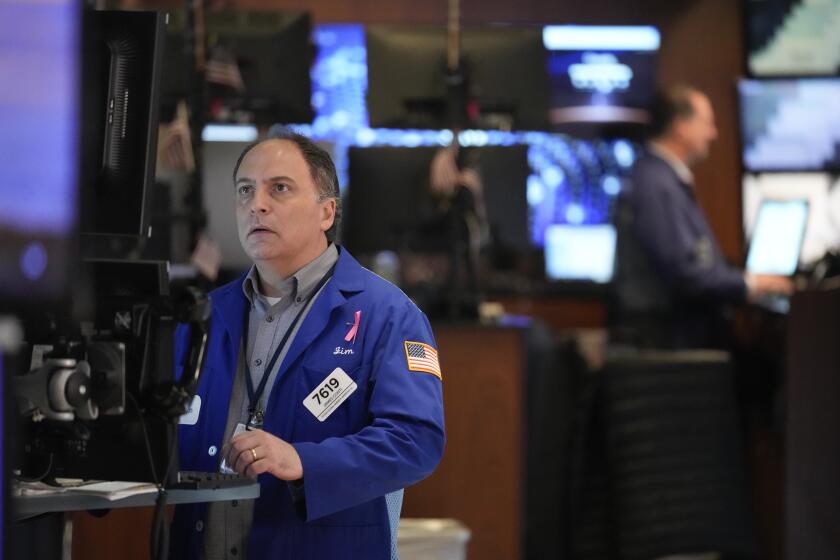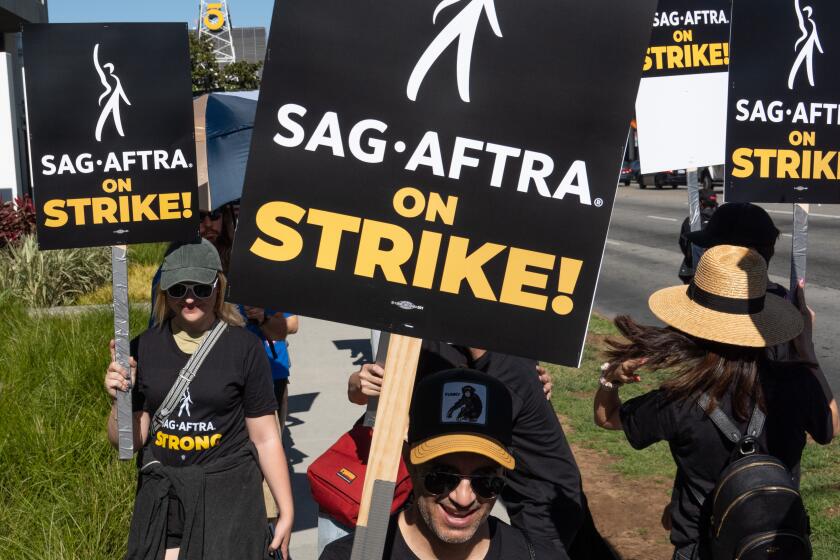Snappy District of L.A.
It would take a high-resolution film and a fast shutter speed to record the emergence of a booming photo district in Los Angeles. While color labs and photo stores have often congregated in a large, defined area in New York and other major cities, Los Angeles--the film capital of the world--never enjoyed a concentration of specialty labs, camera stores and prop shops for professional photographers’ or even amateurs’ services.
In recent years, new film-processing labs have sprung up faster than Polaroids on a fashion-catalogue shoot in the area bounded by Normandie, Fairfax and Franklin avenues and Wilshire Boulevard.
Along with the labs are a growing number of rental establishments stocking everything from electrical and smoke generators to exotic lenses and megawatt strobe systems.
Camera Stores Expand
The district’s camera stores--some newcomers, others established concerns that have recently moved into newer, larger quarters--bulge with all manner of cameras, gels, lenses, lighting gear, portfolio and presentation paraphernalia--as well as film, chemicals and photo paper.
Tucked into anonymous buildings are prop shops where high-tech wizards create customized plastic “ ice” cubes, replica miniatures and backdrops depicting scenes around the globe. There are costumeries capable of outfitting armies of models provided by talent agencies.
Not to be overlooked are the hair, clothing, food, face and set stylists, who help create illusions photographers capture on film.
Also in the district are hundreds of photographers’ studios, ranging from small, shared spaces to elaborate, multilevel complexes.
According to Alexis Scott, publisher of the “L.A. Workbook,” a comprehensive index of the region’s photo industry, Southern California’s professional photographers now total 1,350, a one-third increase during the last decade. There are 125 professional labs, up from 75 in 1977.
Retouchers have doubled to 100, while set stylists, numbering 90 in 1977, now total more than 200.
About 350 hair and makeup stylists are listed in “Workbook,” compared to only 85 a decade ago.
Photo District
Los Angeles has had a photo district of sorts since World War II, when the Art Center (now in Pasadena) began turning out commercial photographers from a campus near 3rd Street and Normandie Avenue. But it was not until the early 1980s that large numbers of suppliers catering to photographers began to move into the present area.
A key attraction was a legacy from WW II--dozens of buildings built for aircraft manufacturers. Many were in serious disrepair--and therefore rented cheaply--but their airy, high-ceilinged interiors were ideal for photo studios.
One of the district’s more obvious success stories is Photography Rental Service, at 931 N. Highland Ave., which has grown from eight to 28 employees since 1984. PRS rents almost everything photographic, specializing in lighting equipment.
One photographer recently rented 300 flash heads, 150 power packs and associated stands, umbrellas, cords and hardware--$2,000 a day--to create a single image.
Ellen Henderson, owner of After Image and the doyenne of Los Angeles stock photo agents, opines that those who buy photos today are far more demanding.
Her agency, which sells rights to the work of about 130 photographers from all over the world, (including 44 based in Southern California) has grown in the 10 years from a locally oriented, two-person firm to an internationally affiliated concern with more than a dozen employees.
One reason for the area’s still-rising standards is a marked improvement in labs.
Transparency Films
Consensus superstar for processing Ektachrome, Fujichrome and Kodachrome transparency films is A&I;, owned and operated by recently retired photographer (posters and record jackets) David Alexander and technical wizard James (Ish) Ishihara.
Ishihara is generally credited as the first in Los Angeles to bring scientific devices for measurement of film characteristics out of the darkroom and into the viewing area where photographers can use them to assess their own images.
“A lot of lab technicians--guys who work for larger labs--are quitting to open their own places, where they can usually do a better job than most really big operations are capable of,” Ishihara said.
A&I; recently added a Kodachrome processing facility to handle what some photographers consider the world’s premier film emulsion. Competing with Kodak’s own huge Hollywood facility required A&I; to upgrade processing standards.
“We began by researching the entire issue,” Alexander says. The result, nearly $1 million later, is a squeaky-clean, high-tech facility with a host of proprietary improvements to computer-minded machinery that turns exposed film into brilliantly colored images.
Victims of Success
Ironically, some photographers have become victims of their own success. According to Dorie Laughlin, executive director of the Los Angeles chapter of Advertising Photographers of America, Hollywood’s redevelopment, which includes part of the photo district, is bringing higher rents.
“As studio leases expire, photographers are being asked for double or triple” what they now pay, she says. Some of the chapter’s 300-plus photographers are investigating other parts of the city, as well as Pasadena’s Walnut Street, an old brewery north of Chinatown and the Helms Bakery area on West Venice.
Others lower overhead by giving up their studios. Because they don’t shoot every day, they find it cheaper to rent space in one of the district’s burgeoning rental studios when they actually need it.






